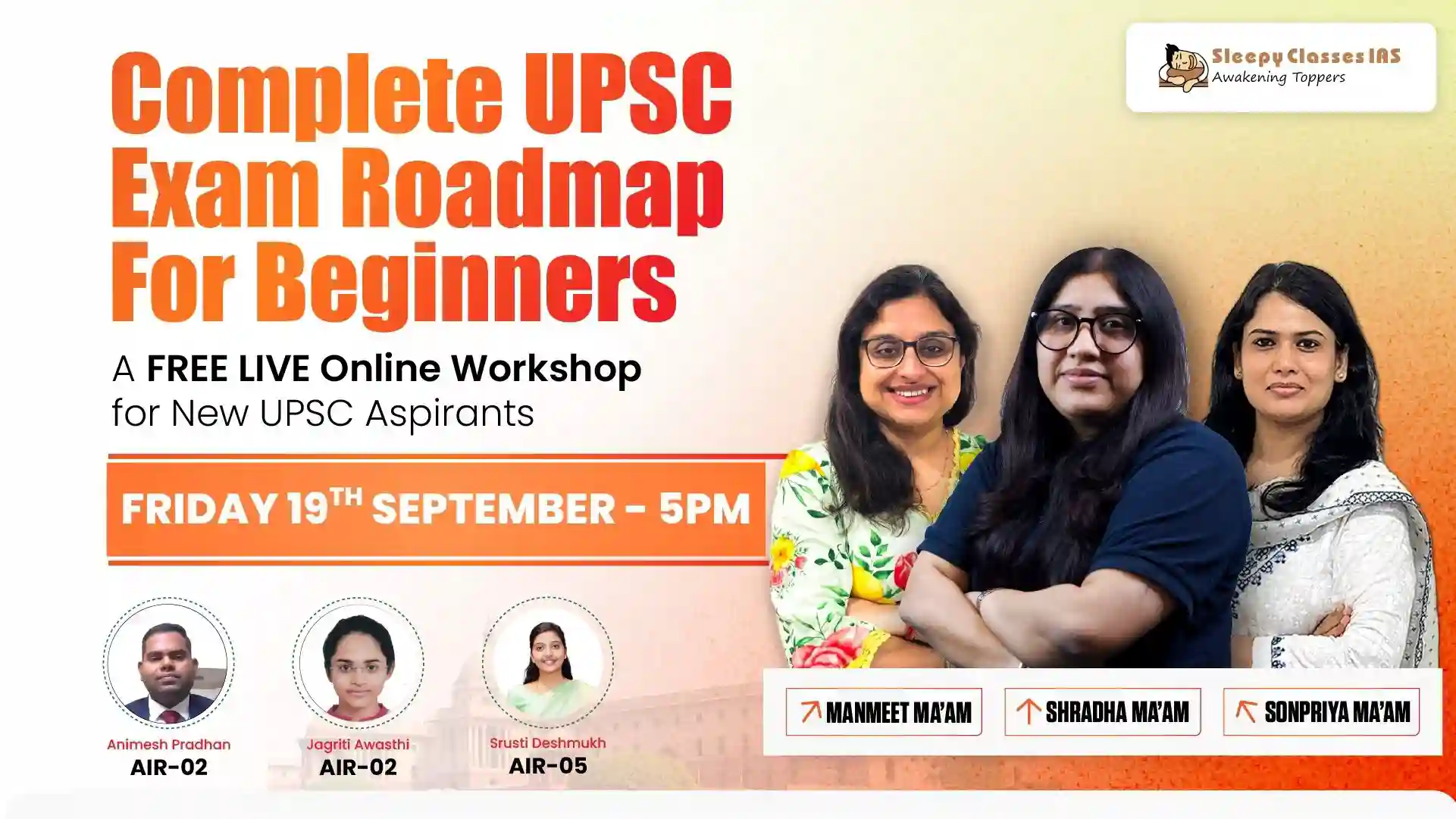The Indian Renaissance was a remarkable period in history that brought about significant changes in Indian society, culture, and politics. It was marked by great thinkers and leaders who sought to reform and modernize India during the 19th and early 20th centuries. This era not only challenged traditional norms but also laid the groundwork for the future of modern India. In this article, we will explore key figures, the socio-political context, cultural revival, social reforms, and the lasting legacy of the Indian Renaissance.
Key Takeaways
- The Indian Renaissance was a movement that aimed to revive and modernize Indian society.
- Key figures like Raja Ram Mohan Roy and Swami Vivekananda played vital roles in social reform.
- The era was influenced by British rule, which introduced new educational and political ideas.
- Cultural revival included a resurgence of classical Indian knowledge and arts.
- The legacy of the Indian Renaissance continues to impact India’s national identity and social structure.
Key Figures of the Indian Renaissance
Raja Ram Mohan Roy: The Father of Indian Renaissance
Raja Ram Mohan Roy, often called the Father of the Indian Renaissance, was a key social reformer. He worked hard to end the practice of sati, which involved the burning of widows on their husband’s funeral pyres. Roy also promoted women’s education and founded the Brahmo Samaj in 1828, aiming to purify Hinduism by removing non-Vedic practices. His efforts emphasized rationality and social justice, making him a pivotal figure in this transformative era.
Swami Vivekananda: Spiritual Leader and Reformer
Swami Vivekananda was another important leader during the Indian Renaissance. He played a significant role in reviving Hinduism and introducing its philosophies to the West. In 1893, he represented Hinduism at the World’s Parliament of Religions in Chicago, where he spoke about universal acceptance and the idea that all religions lead to the same truth. He also founded the Ramakrishna Mission in 1897, focusing on social service and education based on the teachings of his guru, Ramakrishna Paramahamsa.
Rabindranath Tagore: Literary Genius and Cultural Icon
Rabindranath Tagore was a remarkable poet and philosopher, known for his literary contributions that shaped Indian culture. He was the first non-European to win the Nobel Prize in Literature in 1913 for his collection of poems, Gitanjali. Tagore’s works blended Indian and Western philosophies, inspiring a cultural awakening in India. He also established Visva-Bharati University in 1921, promoting a holistic approach to education that integrated various fields of knowledge.
The Indian Renaissance was marked by the contributions of key figures like Raja Ram Mohan Roy, Swami Vivekananda, and Rabindranath Tagore, who played pivotal roles in this movement. Their efforts aimed to address pressing social issues and foster a sense of national identity.
The Socio-Political Context of the Indian Renaissance
The Indian Renaissance was a time of great change in India, influenced heavily by the British rule. This period saw the rise of new ideas and movements that aimed to improve society and culture.
Impact of British Rule on Indian Society
The British presence in India from 1757 to 1947 brought significant changes. Some key impacts include:
- Introduction of Western education and legal systems.
- Creation of a new class of educated Indians who began to question traditional norms.
- Exposure to ideas of democracy and equality, leading to a desire for reform.
Emergence of Western Education and Ideas
Western education played a crucial role in shaping modern Indian thought. It led to:
- The establishment of schools and colleges that taught new subjects.
- The spread of ideas about rights and governance.
- A growing awareness among Indians about their own cultural heritage and the need for reform.
Socio-Religious Reform Movements
The socio-religious reform movements were vital in addressing social issues. These movements aimed to:
- Abolish social evils like caste discrimination and child marriage.
- Promote women’s education and rights.
- Reform religious practices, focusing on rationality and humanism.
The socio-religious reform movements and their leaders were characterised by a recognition of the interconnection between religious and social issues.
In summary, the socio-political context of the Indian Renaissance was shaped by the influence of British rule, the emergence of Western education, and the rise of socio-religious reform movements. These elements combined to create a fertile ground for the cultural and social awakening that defined this era.
Cultural Revival During the Indian Renaissance
The Indian Renaissance was a time of great cultural and intellectual growth. It marked a revival of interest in India’s ancient traditions and knowledge. This period saw a significant revival of classical Indian knowledge, which influenced various aspects of society.
Revival of Classical Indian Knowledge
During the Indian Renaissance, there was a strong focus on rediscovering and promoting ancient Indian texts, philosophies, and arts. Key elements included:
- Translation of ancient texts: Scholars translated important scriptures like the Vedas and Upanishads into English and other languages.
- Promotion of regional languages: Efforts were made to revive and promote regional languages and literature, enhancing cultural pride.
- Integration of Western ideas: The blending of Western educational concepts with traditional Indian knowledge led to a unique cultural synthesis.
Influence on Arts and Literature
The arts flourished during this time, with many artists and writers drawing inspiration from both Indian and Western traditions. Notable contributions included:
- Literature: Writers like Rabindranath Tagore and Bankim Chandra Chatterjee produced works that celebrated Indian culture and identity.
- Visual Arts: The revival of traditional art forms, such as Kalighat paintings, showcased India’s rich artistic heritage.
- Performing Arts: Dance and music saw a resurgence, with classical forms being revitalized and popularized.
Philosophical and Scientific Advancements
The Indian Renaissance also sparked significant advancements in philosophy and science. Key points include:
- Philosophical debates: Thinkers like Swami Vivekananda emphasized the importance of spiritual unity and the universality of religions.
- Scientific inquiry: The period encouraged a scientific approach to understanding the world, leading to innovations in various fields.
- Educational reforms: The establishment of educational institutions focused on both traditional and modern subjects helped foster a new generation of thinkers.
The Indian Renaissance was not just a revival of the past; it was a transformative movement that laid the groundwork for modern Indian identity and thought.
Social Reforms and Movements
Abolition of Social Evils
The Indian Renaissance was marked by significant efforts to eliminate social evils. Reformers like Raja Ram Mohan Roy and Ishwar Chandra Vidyasagar played crucial roles in this movement. They worked tirelessly to end practices such as Sati (the self-immolation of widows) and child marriage. Their advocacy helped raise awareness about the need for social change.
Promotion of Women’s Education and Rights
During this period, there was a strong push for women’s rights and education. Key figures like Pandita Ramabai and Swarnakumari Devi fought for the education of women and their social equality. Their efforts were vital in changing societal attitudes towards women and promoting their rights.
Reformation of Religious Practices
The reformers also challenged orthodox religious practices. They aimed to promote a spirit of religious tolerance and unity. For instance, Swami Vivekananda emphasized the importance of understanding different religions and fostering spiritual unity among people.
The Indian Renaissance was not just about cultural revival; it was also a powerful movement for social justice and equality.
Key Points of Social Reforms
- End of Sati and Child Marriage: Major reforms aimed at abolishing these practices.
- Women’s Education: Focus on educating women to empower them socially and economically.
- Caste System Challenges: Reformers like Jyotirao Phule and B.R. Ambedkar worked against caste discrimination and untouchability.
Summary Table of Key Reformers and Their Contributions
| Reformers | Contributions |
|---|---|
| Raja Ram Mohan Roy | Abolished Sati |
| Ishwar Chandra Vidyasagar | Fought against child marriage |
| Pandita Ramabai | Advocated for women’s education |
| Swami Vivekananda | Promoted religious tolerance and unity |
| Jyotirao Phule | Challenged caste discrimination |
| B.R. Ambedkar | Advocated for the rights of lower castes |
The Role of Education in the Indian Renaissance
Introduction of Western Education Systems
The introduction of Western education during the British rule was a major turning point for India. It brought new ideas about democracy, equality, and human rights. This education challenged old traditions and opened doors for many people. Education became a powerful tool for change.
Establishment of Educational Institutions
During this time, many schools, colleges, and universities were founded. Key figures like Raja Ram Mohan Roy and Ishwar Chandra Vidyasagar worked hard to promote education, especially for women and lower castes. They believed that education was essential for social progress. Here are some important contributions:
- Raja Ram Mohan Roy established schools that focused on modern subjects.
- Ishwar Chandra Vidyasagar advocated for women’s education and helped pass laws for women’s rights.
- Jyotirao Phule opened schools for girls and the lower castes, promoting inclusivity.
Impact on Indian Society and Culture
The impact of education during the Indian Renaissance was profound. It not only empowered individuals but also helped marginalized groups, including women and the lower castes, giving them access to opportunities for social mobility. This shift in education led to a more informed society that could question and reform outdated practices.
Education was not just about learning; it was about creating a new identity for India, one that embraced both its rich heritage and modern values.
In summary, the role of education in the Indian Renaissance was crucial. It laid the foundation for a more equitable society and inspired future generations to strive for progress and equality.
Economic Changes and Developments
Industrialization and Urbanization
The Indian Renaissance marked a significant shift towards industrialization and urbanization. This period saw the establishment of various industries, which played a crucial role in transforming the economy. The growth of industries led to increased job opportunities and a shift from rural to urban living. Key points include:
- Development of textile and jute industries.
- Growth of iron and steel production.
- Expansion of transportation networks, including railways.
Changes in Agricultural Practices
Agriculture underwent notable changes during this time. Traditional farming methods were replaced with more modern techniques, which improved productivity. Some important changes were:
- Introduction of new crops and farming techniques.
- Use of fertilizers and improved irrigation methods.
- Shift from subsistence farming to cash crops.
Economic Policies and Reforms
The economic landscape was also shaped by various policies and reforms aimed at fostering growth. These included:
- Establishment of cooperative societies to support farmers.
- Government initiatives to promote small-scale industries.
- Policies aimed at improving infrastructure and connectivity.
The Indian economy is on a strong wicket and stable footing, showing resilience amid challenges.
In summary, the economic changes during the Indian Renaissance laid the groundwork for a more modern and diversified economy, setting the stage for future growth and development. The period was marked by significant advancements in industrialization, agriculture, and economic policies, which collectively contributed to the transformation of India’s economic landscape.
The Legacy of the Indian Renaissance
The Indian Renaissance has left a profound mark on modern India. Its influence is evident in various aspects of society, culture, and politics. This period, which spanned the 19th and early 20th centuries, laid the groundwork for many of the values we hold today, such as equality, secularism, and social justice.
Influence on Modern Indian Society
- The ideals of rationalism and humanism promoted during the Renaissance continue to inspire social reforms.
- The movement encouraged the abolition of social evils, such as untouchability, and championed the rights of women and marginalized communities.
- Education became a key focus, leading to the establishment of numerous institutions that shaped the intellectual landscape of India.
Contributions to National Identity
- The Renaissance played a crucial role in fostering a sense of national identity among Indians, promoting pride in their cultural heritage.
- Leaders like Raja Ram Mohan Roy and Swami Vivekananda became famous social reformers of India and their contributions helped unite people across different regions and communities.
- The revival of classical Indian knowledge and arts during this time has had a lasting impact on contemporary Indian culture.
Impact on India’s Independence Movement
- The ideas and reforms initiated during the Indian Renaissance laid the foundation for the struggle for independence.
- The emphasis on social justice and equality influenced key figures in the freedom movement, who sought to create a more equitable society.
- The legacy of the Renaissance continues to resonate in modern India, reminding us of the importance of progress and reform in achieving a just society.
The Indian Renaissance was not just a historical event; it was a movement that transformed the very fabric of Indian society, inspiring generations to strive for a better future.
Critiques of the Indian Renaissance
The Critique of Westernization
One major critique of the Indian Renaissance is the argument of cultural erosion. Critics believe that the focus on Western ideas like rationalism and secularism led to a decline in traditional Indian culture and values. They argue that adopting these Western concepts caused a loss of unique Indian cultural and philosophical traditions.
The Counter-Argument of Progress
In response, supporters of the Indian Renaissance argue that embracing Western ideas brought about progress and modernization. They claim that this movement was essential for promoting social reforms, education, and the empowerment of women, which were necessary for the advancement of Indian society.
The Critique of Elitism
Another critique is the argument of exclusion. Critics say that the Indian Renaissance was mainly an elitist movement, benefiting only the upper classes and castes. They argue that the advantages of education and social reforms were not accessible to the majority of the Indian population.
The Counter-Argument of Trickle-Down Effect
Supporters counter this by suggesting a trickle-down effect. They believe that while the benefits initially reached the upper classes, they eventually spread to lower classes and castes, leading to their upliftment.
The Critique of Gender Bias
A further critique focuses on patriarchal bias. Critics argue that despite advocating for women’s rights, the Indian Renaissance still reflected a male-dominated perspective. They contend that women were often excluded from important discussions, highlighting the movement’s gender bias.
The Counter-Argument of Progressive Reforms
In contrast, proponents argue that the Indian Renaissance played a vital role in promoting progressive reforms for women, such as the abolition of sati and the push for women’s education. They believe these reforms were significant steps toward achieving gender equality in Indian society.
The Indian Renaissance was a complex movement that aimed to challenge social practices like caste discrimination and promote education. However, it faced critiques regarding its inclusivity and the impact on traditional values.
Overall, while the Indian Renaissance made significant contributions to modern India, it also faced valid critiques that highlight the need for a more inclusive approach to social reform and cultural revival.
The Indian Renaissance as a Catalyst for Modern India
Foundation for Political and Cultural Changes
The Indian Renaissance was a crucial period that laid the groundwork for significant political and cultural transformations in India. This era sparked a new sense of identity and purpose among Indians. It encouraged people to embrace their heritage while also adopting modern ideas from the West. The movement inspired many to seek independence from colonial rule, leading to a stronger national identity.
Role in Nation-Building
During this time, various leaders and thinkers emerged, advocating for social reforms and the revival of Indian culture. They played a vital role in shaping the nation’s future. The Renaissance helped unite diverse groups under a common goal of freedom and self-determination. This unity was essential for the eventual struggle for independence.
Long-Term Impacts on Indian Society
The impacts of the Indian Renaissance are still felt today. It promoted values such as equality, justice, and education, which are now fundamental to Indian society. The ideas of rationalism and secularism that emerged during this period continue to influence modern Indian politics and culture.
The Indian Renaissance was not just a historical event; it was a movement that transformed the very fabric of Indian society, paving the way for a modern nation.
In summary, the Indian Renaissance served as a catalyst for change, fostering a spirit of nationalism and cultural pride that continues to shape India today. It was a time of awakening that encouraged Indians to look both inward and outward, blending tradition with modernity.
The Indian Renaissance sparked a wave of change that shaped modern India. This period was crucial in inspiring new ideas and movements that continue to influence our society today. If you want to learn more about how this transformation impacts our lives, visit our website for insightful resources and guidance on your journey to success!
Conclusion: The Lasting Impact of Indian Renaissance Leaders
The Indian Renaissance was a crucial time that shaped modern India. Leaders like Raja Ram Mohan Roy, Swami Vivekananda, and Rabindranath Tagore inspired change and encouraged people to think differently about their society. They fought against outdated traditions and worked hard to improve education and social justice. Their ideas helped spark a sense of pride in Indian culture and identity. Today, we can see their influence in our ongoing efforts for equality and progress. The work of these leaders reminds us that change is possible when we stand together for a better future.
Frequently Asked Questions
What was the Indian Renaissance?
The Indian Renaissance was a time in the 19th and early 20th centuries when India saw a revival of culture, arts, and social reforms. It aimed to bring back the glory of Indian traditions while also embracing new ideas.
Who were the main leaders of the Indian Renaissance?
Key leaders included Raja Ram Mohan Roy, who fought against social evils, Swami Vivekananda, who promoted Hindu philosophy, and Rabindranath Tagore, a famous poet and thinker.
How did British rule influence the Indian Renaissance?
British rule introduced Western education and ideas, which helped educated Indians question old traditions and seek reforms in society.
What were some social reforms during the Indian Renaissance?
Reforms included the abolition of practices like sati (widow burning), promoting women’s education, and fighting against caste discrimination.
What role did education play in the Indian Renaissance?
Education was crucial as it spread new ideas and encouraged people to think critically about society and its issues, leading to more reforms.
How did the Indian Renaissance affect arts and literature?
The Renaissance inspired a new wave of creativity in arts and literature, blending Indian and Western styles and themes, which enriched cultural expression.
What is the legacy of the Indian Renaissance?
The Indian Renaissance laid the groundwork for modern India, influencing national identity and contributing to the freedom struggle against British rule.
Are there any critiques of the Indian Renaissance?
Some critiques focus on its limitations, such as not addressing all social issues or the debate over cultural identity during the movement.




